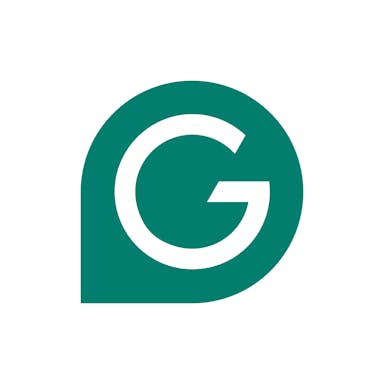Thesis
With the rise of remote work and learning, digital communication has become increasingly critical. As of 2021, around 60% of students enrolled in higher education were taking at least some online classes, and about 30% were doing so exclusively. As of May 2023, 8.5 million students in the US were taking higher education classes online, and 2.8 million were enrolled in online colleges and universities. Meanwhile, remote work accounted for 28% of workdays in early 2023, versus only 6% before 2019.
This shift to digital in both school and work has led to the increasing importance of clear, concise, efficient, and error-free written communication. According to a March 2023 survey of employers, hirers, and job posters on LinkedIn, proper communication was consistently listed among the most sought-after hard and soft skills. Meanwhile, small business employees spent about 11 hours a week on average writing emails according to one October 2023 survey.
The advent of generative AI tools like OpenAI's ChatGPT are increasingly being relied on to help students and workers with their digital communications. AI is being used in some cases to streamline the writing process, and in others to draft communications. Across the economy, students and workers engaged in digital communications are increasingly relying on tools such as Gmail’s Smart Compose feature to help them formulate and edit their communications.
Grammarly is a digital writing assistant that leverages AI to offer grammar checking, style editing, and clarity improvements for users. Building on top of traditional spell and grammar check tools, Grammarly offers a suite of writing enhancements, from tone detection to plagiarism checks. Its freemium model ensures a broad user base while its premium services provide depth and customization. With integrations across browsers, operating systems, and platforms like Microsoft Office, Grammarly is pursuing a mission to “help people achieve more through effective communication, whenever and wherever they write in English.”
Founding Story

Source: Grammarly
Grammarly was founded in 2009 by Max Lytvyn, Alex Shevchenko, Dmytro Lider. However, this was not the first venture the Ukranian-born trio had worked on together. Lytvyn and Schvchenko first met in their undergraduate days at the International Christian University in Ukraine and later moved to North America for their MBAs at Vanderbilt University and University of Toronto, respectively. The two subsequently co-founded My DropBox, later bringing on Lider as a software engineer.
My DropBox primarily functioned as a plagiarism-detection company. By 2007, its technology had rolled out to 800 universities worldwide and an estimated 2 million students were running their papers through the company’s software to detect plagiarism. With this early success, My DropBox was acquired by Blackboard, a global leader in educational technology services.
While My DropBox no longer exists today, it was a catalyst for the founding of Grammarly. In Lytvyn’s words, the experience “led us to ask a serious underlying question: Why do people choose to plagiarize in the first place? Could it be that they were finding it difficult to communicate what they meant in their own voice?”
To test this theory, the trio launched a new company: an online editor. The product focused on grammatical error correction and generated revenue through a paid subscription model. The company, now called Grammarly, was able to quickly become cash-flow positive and indicating that there was demand for such a tool. As Lytvyn noted, “We felt that if we could assist with the basic building blocks of the English language — with the mechanics of writing — maybe we could help people have more confidence in their work and not feel the need to lift text from other sources.”
By 2011, Grammarly’s early product success had drawn in the interest of Brad Hoover. Previously a management consultant at McKinsey & Company and an investor at General Catalyst Partners, he soon joined Grammarly as its CEO. From that point, Grammarly’s product suite continued to grow. By 2015, Grammarly had released its browser extension for Chrome, Safari, Firefox, and Edge and switched to a freemium model.
In March 2023, Grammarly hit an inflection point. In line with the launch of its new generative AI product GrammarlyGO, the company experienced a significant shift in leadership. Brad Hoover transitioned into a board member role and passed on the CEO title to Rahul Roy-Chowdhury, previously the Global Head of Product. The CPO and CTO were also changed, with Noam Lovinsky, previously Senior Director of Product Management at Facebook, and Joe Xavier, previously VP of Engineering, taking the titles, respectively.
Product
Grammarly’s product offerings center on communication and writing assistance, through integration on desktop and mobile, across thousands of websites and applications. Since its launch, Grammarly has focused on enabling "confident writing" with features to help users achieve mistake-free and polished writing. In 2023, it rolled out GrammarlyGo, an enterprise-grade generative AI tool for writing assistance.
Spelling and Grammar Checker
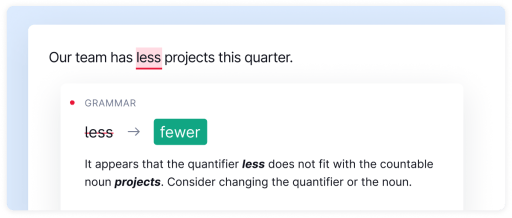
Source: Grammarly
Grammarly’s grammar checker tool tracks and applies instant corrections to grammar errors, misspelled words, and punctuation mistakes to help ensure polished writing. This tool can either be used on Grammarly’s website, or desktop app, or as an embedded tool in a user’s browser or app of choice.
Grammarly will automatically underline issues it detects, which include critical spelling or grammar errors which it underlines in red. It also makes suggestions for clearer or more concise wording that it underlines in blue. Users can hover over the underlined text to see suggestions and click a suggestion to accept and implement the change.
Plagiarism Checker

Source: Grammarly
Using text from another piece of writing without proper citation, whether intentional or otherwise, can result in serious consequences in academic and professional settings. Grammarly’s plagiarism checker can detect and identify any text that is not completely original. The tool compares entered text with billions of web pages and academic papers stored in ProQuest’s databases. If any matches are found, the relevant text will be marked and the user will receive a plagiarism alert. With Grammarly’s premium plan, the plagiarism checker will provide references about the source from which a piece of text was plagiarized and calculate an overall originality score for the entered document.
Citation Generator
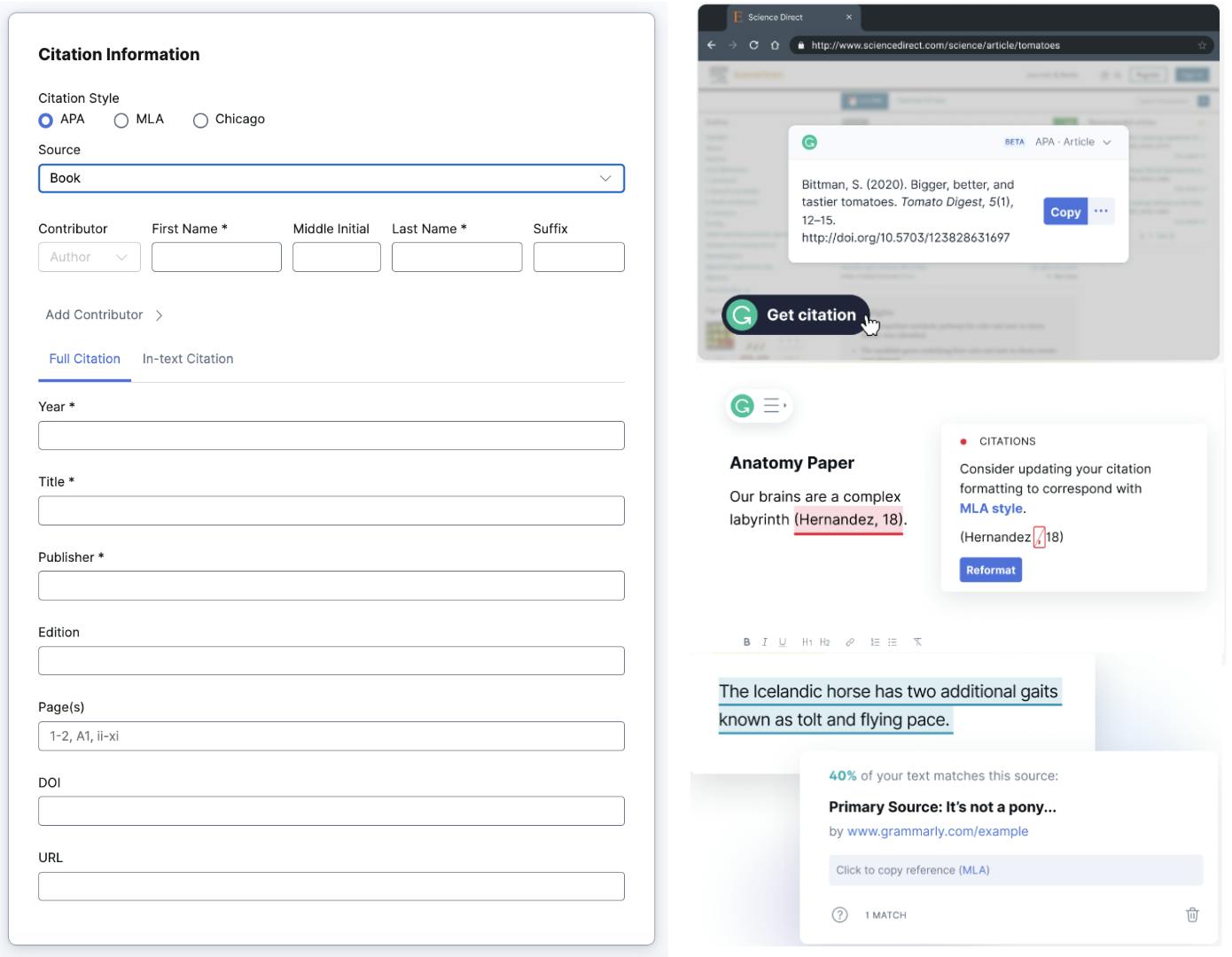
Source: Grammarly
Using the online citation generator feature, a user can input the required information to generate a properly formatted citation in APA, MLA, or the Chicago style — the most common citation formats in academic work. To make citations easier, Grammarly can also be directly added as an extension in a user’s browser of choice where the online sources from that web browser can be pulled to automatically generate pre-formatted citations. With its premium subscription, Grammarly also helps users ensure citations are properly formatted in-text and automatically offer references when potential plagiarism is detected.
Paraphrasing Tool
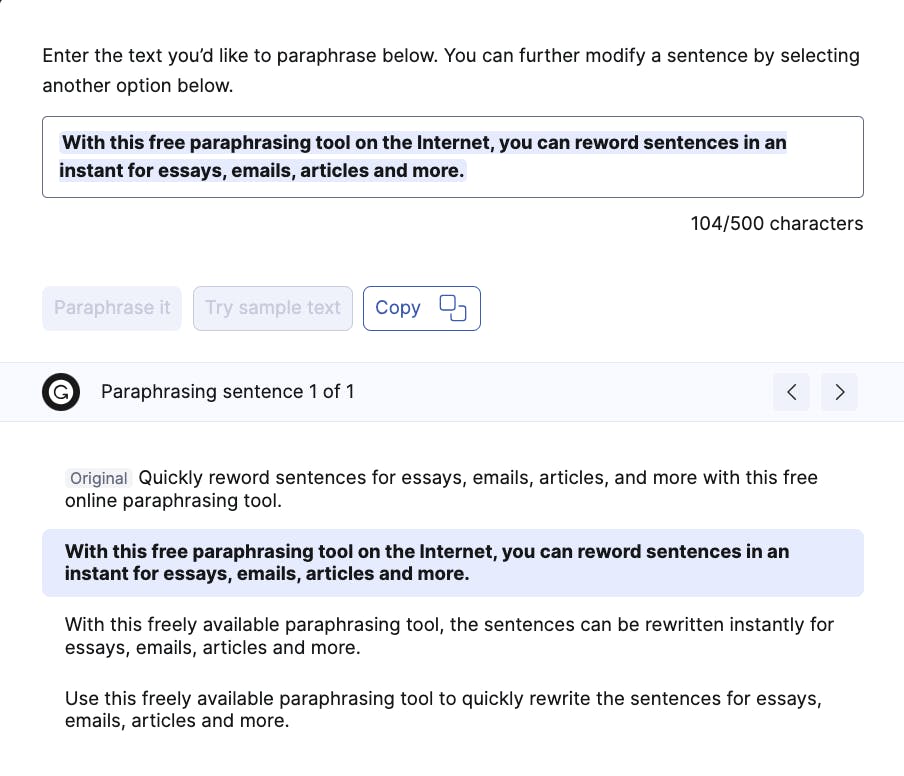
Source: Grammarly
Grammarly also offers a paraphrasing tool that allows users to convey the same general idea of a desired passage or quote into different words — thereby preventing accidental plagiarism. To use this, users enter the selected text into the online text box tool and Grammarly then generates several modified alternatives for use.
AI Writing Tools
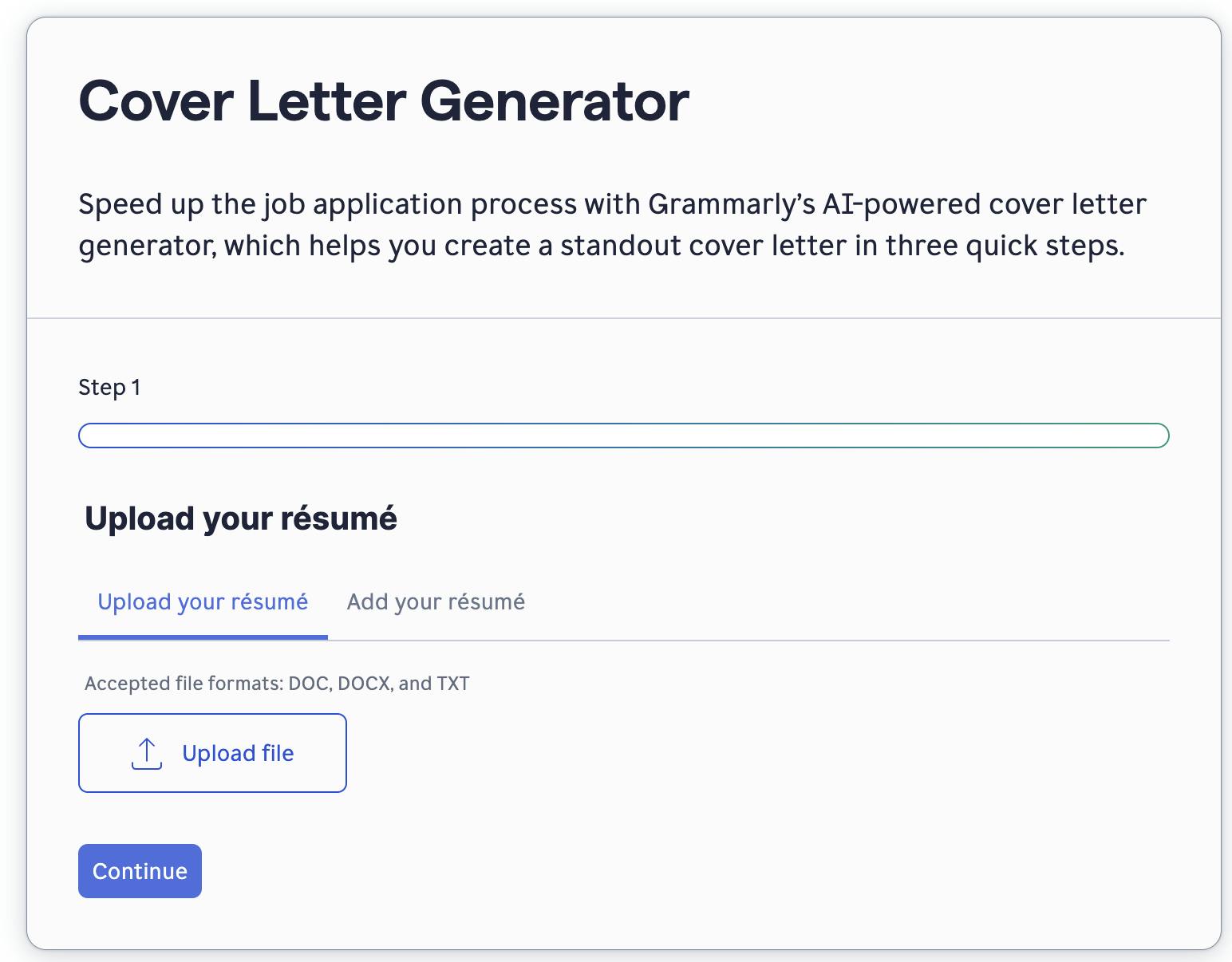
Source: Grammarly
Grammarly offers generative AI tools that allow users to create text for emails, articles, cover letters, job descriptions, resumes, Instagram captions, business reports, and more. Each tool has a specific prompt query or other inputs that helps the tool generate the desired piece of writing. The generated text can be adjusted for formality, tone, and length.
Tone Detector

Source: Grammarly
As part of its co-writing function, Grammarly offers live monitoring and suggestions of the tone in a given piece of writing. By analyzing word choice, phrasing, punctuation, and capitalization, Grammarly’s tone checker can identify the tone of which an email for example would sound to a reader. With the premium subscription, Grammarly also offers rephrasing suggestions to adjust the desired tone of a piece of text.
Style Guide
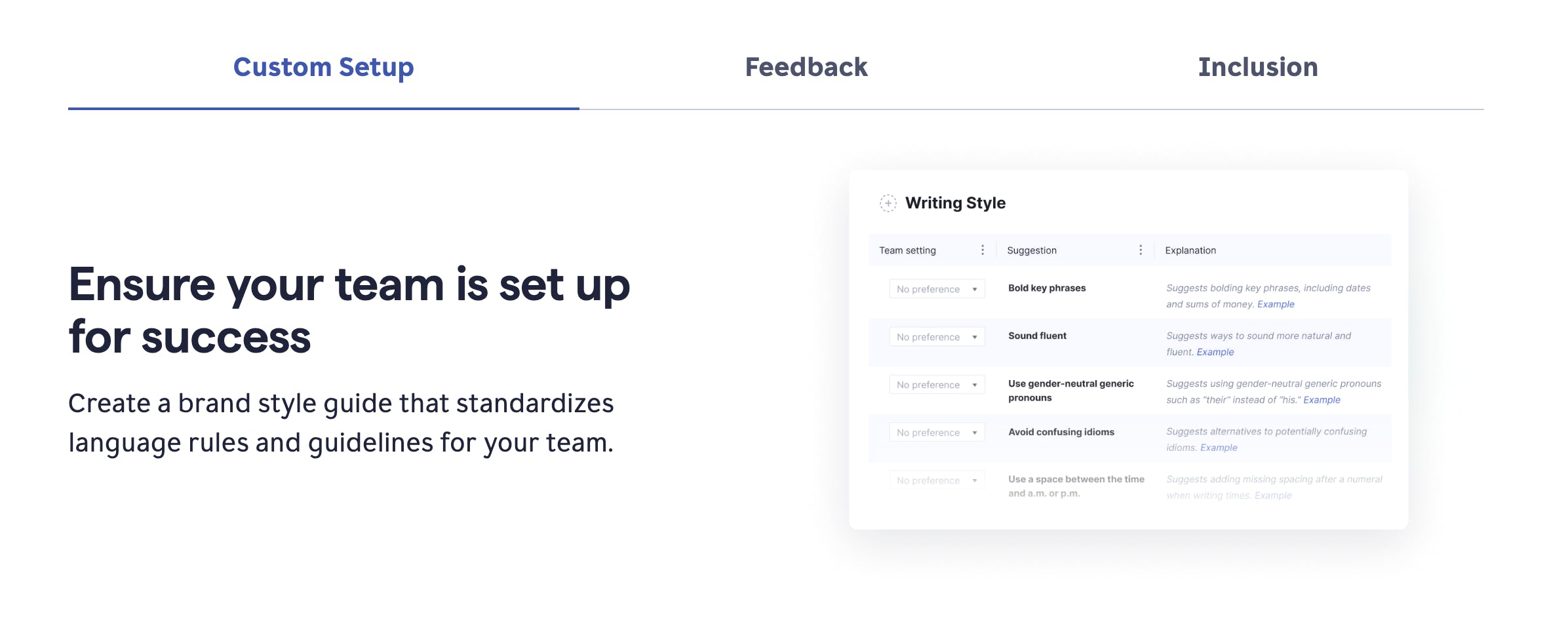
Source: Grammarly
Grammarly offers tools for teams to implement a consistent style in voice, wording, and branding across their organization. Teams can build a shared library of words, terms, and phrases that are organization-specific. This library is tied with a replacement tool that automatically suggests terms from within the library in order to avoid jargon and keep institutional terminology consistent
Snippets

Source: Grammarly
Grammarly snippets are intended to allow users to write more quickly. Using keyboard shortcuts, Grammarly can generate sentences using basic prompts. For example, prompting “follow up” can generate a full email requesting a follow-up with a client. Using Grammarly’s snippet library, users can create a library of custom snippets for increased productivity as an individual or a team. For example, “follow up” emails that are sent frequently can be saved in the library and be used to auto-generate an email for quick and simply sending.
Analytics

Source: Grammarly
Grammarly offers a suite of analytics tools that allow users to track their team’s activities. These includes communications frequency by team, general tone of writing for client-facing materials, and Grammarly’s impact on efficiency. These features are included in Grammarly Business.
Brand Tones

Source: Grammarly
Grammarly’s brand tones tool offers augmented features to the tone detector, and is geared towards business use. Team members can receive real-time feedback to adjust the tone of their writing to remain on-brand and tone analytics will allow managers to review team tones at a high level.
Market
Customer
Grammarly serves a large and diversified customer base (through its free and premium tiers) and organizations (through its business tier) seeking assistance with English language writing. As of February 2024, Grammarly’s customers include 70K businesses and more than 30 million daily active users.

Source: Grammarly
In education, Grammarly has over 3K higher education institutions as customers as of February 2024. Notable institutions include UCLA, MIT, Johns Hopkins, Cornell, Pepperdine, Northwestern, Penn State, the University of Florda, UNC Chapel Hill, and Indiana University. Students use Grammarly for products like its grammar checker and citation tool, whereas teachers can make use of its plagiarism detector.

Source: Grammarly
Another important customer segment for Grammarly is private companies, including a number of technology companies. Notable customers of Grammarly within this segment as of February 2024 include Atlassian, Expedia, Zoom, BlackRock, Databricks, Everlane, Expensify, Zapier, and Upwork.
Market Size
Grammarly has several relevant markets. The global writing enhancement software market that its core product lies within was valued at $278.5 million in 2021 and is expected to grow to $477.5 million by 2031, growing at a 9.4% CAGR. Meanwhile, the anti-plagiarism software market was valued at $737 million in 2021 and is expected to grow to $4.8 billion by 2030, growing at a 23.3% CAGR.
However, with the addition of its generative AI tools, Grammarly has also entered the generative AI market, although it specifically focuses on text. The generative AI market was valued at $29 billion in 2022 and is projected to grow at a CAGR of 47.5% to reach $668 billion by 2030. Although much of the value of the market is being captured by leading players such as OpenAI, Midjourney, and Anthropic, Grammarly may be able to carve out its own sizable position.
Competition
Jasper: Jasper, founded in 2015, is an AI writing tool that focuses on helping businesses create content including captions, emails, and blogs. Jasper is one of the leading AI marketing tools, with over 100K business customers as of February 2024. Jasper reached a $1.5 billion valuation in October 2022 after raising a $125 million Series A. The round was led by Insight Partners with participation from Coatue, Bessemer Venture Partners, IVP, Foundation Capital, Founders Circle Capital, and HubSpot Ventures, and brought the company’s total funding to $131 million.
ProWritingAid: ProWritingAid is a United Kingdom-based AI writing software company founded in 2013. Similar to Grammarly, ProWritingAid offers grammar and spell check on its desktop app, web app, or as an integrated tool on external writing software. ProWritingAid is noted to offer fewer features, but offers a slightly cheaper premium tier at $10 compared to Grammarly’s $12, as of February 2024.
WhiteSmoke: WhiteSmoke is a Delaware-based company founded in 2002 using NLP and AI to enhance English writing. WhiteSmoke filed for a $23 million IPO in May 2011. This effort ultimately failed due to the company’s poor financial results. In October 2012, following the failed IPO, WhiteSmoke announced a reverse merger with a Tel Aviv Stock Exchange shell, Eldan Tech allowing for its listing (TASE: ELDN). WhiteSmoke offers similar editing suggestions as Grammarly, but does not offer a free tier with the lowest pricing subscription listed at $10 per month.
LanguageTool: LanguageTool, founded in 2017, provides a writing assistant tool for grammar and spell check and language style suggestions. A major difference from Grammarly is that LanguageTool edits language other than English. In fact, it can spell check and paraphrase in over 30 other languages as of February 2024, including German, Portuguese, Spanish, Dutch, and French. It offers a free tier, a premium individual tier starting at $4.99 per month, and a teams tier starting at $11.07 per month for two users. LanguageTool was acquired for an undisclosed amount in April 2023 by Learneo, a platform for productivity and learning.
AutoCrit: AutoCrit is a New York-based company founded in 2006. It is an online manuscript editing tool that helps authors self-edit their work. Though initially developed for fiction writing, AutoCrit launched its non-fiction editing suite in 2020. The primary differentiators from Grammarly are its focus on authors and long-form content. AutoCrit offers a free basic tier and a pro tier at $30 per month (or $15/month if paid annually) as of February 2024.
Business Model
Grammarly operates with a subscription-based freemium business model where basic functions are offered at no cost and additional features may be added with an additional monthly fee.
Grammarly’s three pricing tiers as of February 2024 were:
Free (no cost): Text generation, basic writing suggestions, and tone detection.
Premium ($12/member/month): Everything in Free, plus full-sentence rewrites, vocabulary ideas, tone suggestions, and more.
Business ($15/member/month): Everything in Premium, plus features for teams like centralized billing and style guides.
Traction
Grammarly’s user base grew from 1 million in 2015 to 30 million by 2020. By February 2024, Grammarly’s customers included 70K businesses, and the company continued to report 30 million daily active users, implying a slowdown in user growth.
To push back on new competition from OpenAI’s ChatGPT release at the end of 2022, Grammarly subsequently released its own generative AI tool GrammarlyGO in April 2023. Beyond fixing writing mistakes, this new release sought to act as a co-creator across all forms of English writing. To reflect Grammarly’s shifting strategy, the announcement of GrammarlyGO’s release was also coupled with a major shakeup in senior leadership, replacing the CEO, CTO, and CPO.
In September 2023, Grammarly announced the launch of a new global partner program for AI writing assistance called the Global Channel Partner Program, which seeks to empower channel partners to bring Grammarly’s AI writing support to their customers. Tools offered through the program include deal registration, creating and managing quotes, PO submissions, customer-shareable resources, and swag redemption.
In February 2024, Grammarly announced that it was laying off 230 people out of a total workforce of 1K people as part of an effort to “restructure for continued success in the future” and to “redesign our organization to improve the quality and speed of collaboration”. CEO Rahul Roy-Chowdhury also stated that the layoffs were “not a cost-cutting exercise” and that “Grammarly’s financial position is, and remains, strong.”
The same February 2024 announcement emphasized that Grammarly was being used by people at 96% of Fortune 500 companies and that its business is growing and remains profitable after having maintained profitability in the previous 15 years while growing its headcount from 200 to 1K people.
Valuation
In November 2021, Grammarly raised $200 million at a $13 billion valuation from new investors including Baillie Gifford and funds managed by BlackRock. This funding is in addition to $90 million raised in October 2019 and $110 million raised in May 2017, both rounds led by General Catalyst. The company has raised a total of $400 million in funding as of February 2024.
Key Opportunities
Continued Investment in Generative AI
In one September 2023 report, it was estimated that 97% of companies will invest in generative AI to support communications over the following 24-month period. This represents a substantial growth opportunity for Grammarly in securing institutional clients at its top business pricing tier. Grammarly has already made efforts to chase these tailwinds with the release of GrammarlyGO and the launch of its Global Channel Partner Program.
Changing Consumer Habits
The bar for efficiency and productivity in both the workplace and academia is becoming increasingly high. This has only been accelerated with the advent of tools like ChatGPT and Google’s Bard, which have acclimated a large number of people to develop prompt engineering skills to increase personal and professional productivity.
Even prior to the release of GrammarlyGO, student user research showed that 93% of respondents felt that Grammarly helped them save time on writing. As a growing population becomes familiar with the use of ML-powered writing tools to enhance the clarity and speed of their communications, Grammarly will be well-positioned to capitalize on this shift in consumer behavior.
Key Risks
Competition
Grammarly’s features are offered by a range of competitors, including both direct competitors and adjacent competitors offering generative AI tools. For example, many of Grammarly’s spell-check, citation, and plagiarism functions can also be performed by other AI tools with larger userbases such as ChatGPT (around 180.5 million users as of February 2024). Grammarly’s easy-to-use and visually appealing interface along with its wide spread of features has driven its popularity. It will have to continue adding to its already long list of features in order to retain the satisfaction and loyalty of its users.
Restriction to the English language
While English undoubtedly remains the language of global business, with at least 60% of multinational companies using it as of 2021, communication with local populations in their native language (i.e., through targeted ads) is crucial. Grammarly pitches itself as an English language assistant platform for both individual and professional use; however, this could prove limiting in business situations where users may opt to produce text in other languages.
Summary
Grammarly is a writing assistance software company with a large suite of tools for spell and grammar check, stylistic communication, citations, and generative AI-enabled co-writing. The company has over 30 million daily users as of February 2024 and is poised to be increasingly influential in enhancing productive writing with its integrations across thousands of platforms. Grammarly raised $200 million at a $13 billion valuation in November 2021 and is continuing to evolve, with prime examples being the senior leadership shakeup, the GrammarlyGO release in 2023, and a large round of layoffs in February 2024.
